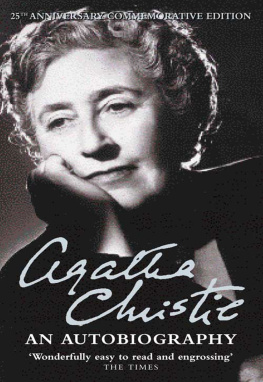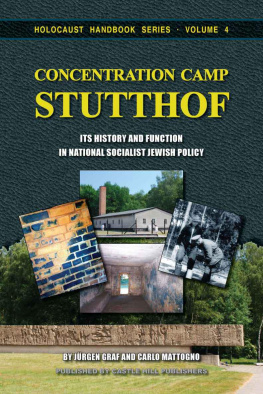About Nicolas S Mitchell
After a varied career spanning two decades, in 2001 Nicolas Mitchell fulfilled a lifelong ambition and went up to university reading for a 1st in Politics at the University of Nottingham and then a Masters degree in International Politics and Research Methods at the University of Sheffield.
After graduating in 2006 a family employment opportunity took him to Munich, where a passion for historical research found him exploring the role this Bavarian city played in the birth of National Socialism and political oppression. He subsequently obtained employment at Dachau Memorial Site undergoing training with the education department and then leading the Open Tour of the site communicating with hundreds of visitors from all parts of the world. In the winter of 2009 he spent time visiting and researching numerous important locations associated with the Holocaust in Poland before returning home to the UK.
He is now based in Sheffield on the edge of the Peak District and continues to engage in historical research. As a keen long distance cycle tourist Nicolas spent 2011 researching and writing his latest guidebook to an iconic UK cycle route; he is now back on more familiar territory researching the Holocaust in Poland with plans for a new guidebook in the winter of 2012.
About BiteSize Travel
BiteSize Travel is a series of relatively short e-books covering varying aspects of travel. Some titles are factual guides to a place or tourist attraction. Others are travelogues recounting an authors experiences on a journey or at an event.
All the ebooks are written by experienced writers who have a detailed knowledge and understanding of the subject they are writing about.
All the titles are extensively illustrated with colour photographs. These are just as fascinating when viewed on an ereader with a black & white screen. On many reading devices you can zoom in for greater detail by tapping or clicking on the picture.
The current titles in the BiteSize Travel series are:
Dachau Concentration Camp A Guide to the Former Concentration Camp and the Memorial Site by Nicolas S Mitchell
Masks of the Moryons Easter Week in Mogpog by Trish Nicholson
On a Flying Tiger A Journey in Bhutan by Trish Nicholson
Further titles are currently being prepared and will become available in the coming months.
Introduction
This short ebook is designed to fulfill two functions. Firstly, to act as a guide to some of the important aspects of the infamous Dachau Concentration Camp and secondly to highlight and explain the significance of the main memorials that now stand on the grounds of the former concentration camp. Hundreds of thousands of people from all continents visit Dachau Memorial Site each year and any visitor to the Memorial Site will find that the bookshop stocks two publications worthy of particular mention, both deal at length with the history of the former concentration camp; Stanislav Zamecnik's outstanding, That Was Dachau and the superb Catalogue for the Exhibition: The Dachau Concentration Camp edited by Barbara Distel.
Notwithstanding, there is little, recently written and reasonably priced literature which deals in a clear and concise manner with key themes. The original booklet and now the ebook were written in response to questions that were often raised when the author conducted the `open tour' of the Memorial Site. Visitors were keen to understand who was imprisoned and why, they were curious to know how prisoners arrived and the procedure of being processed into `protective custody' at the concentration camp. Furthermore, they wanted to know the significance of the religious and non-denominational memorials and the importance of Baracke X.
The ebook is designed to address these themes and to be used either as an aid when making a visit to the Memorial Site or it can be read independently as a complement to the existing literature. It is written in an accessible style with accounts of former prisoners used to illustrate the conditions which existed within the concentration camp.
Plate 1: The Museum Building (contemporary photograph)
The early years
The first Nazi concentration camp opened on 22 March 1933, on the outskirts of the town of Dachau. Between 1890 and 1914 this small, picturesque, Bavarian town had been a thriving artists community.
This situation was disrupted as many of its artistic residents responded to Germanys call to arms prior to the First World War; some enlisted, some moved away and the town never returned to its former glory. These demographic changes meant that the town felt an economic pinch in the period leading up to the First World War, and the towns patriarchs began to think of other ways to attract wealth and business to the area now that the artists and poets had left.
The answer to the void and its inherent impact on the local economy was the foundation of a gunpowder and munitions factory.1 This new factory was known locally as the Pumf, and provided the German army with munitions for the battlefields of the First World War. However, defeat on the battlefield and the terms of the Treaty of Versailles meant that the Pumf was closed down at the end of the war.
The town of Dachau struggled in the 1920s; thousands of workers were laid off from the Pumf or German Works as it was later called, meaning that the town suffered from unenviable unemployment figures compared with the rest of Germany. In later years the Great Depression compounded this problem.
By early 1933, the towns elders were becoming extremely concerned and increasingly vocal in their requests to the government of Bavaria to make some use of the site formerly occupied by the German Works. Initially, ideas such as a militia or conscription camp were floated for the site, but it was eventually earmarked as a concentration camp for political enemies of the newly installed Nazi regime.2
The origins of Dachau, the first Third Reich concentration camp, and the use of Schtzhaft or protective custody, originated from an act of arson by a 24-year-old Dutch Communist, Marinus van der Lubbe.3 The burning of the Reichstag in Berlin on 27 February 1933 presented Adolf Hitler, the newly installed Chancellor of National Socialist Germany, with a golden opportunity; it allowed him to present the arson as the signal that the Communists were preparing an armed mutiny against the state. In the wake of the Reichstag fire, measures were announced by Hitler and signed by President Paul von Hindenburg the following day. On 28 February 1933 these measures formed the decree Order of the Reich President for the Protection of the People and the State. At a stroke of the ageing presidents pen, the most significant law in the history of the Third Reich was implemented.
The huge implications of what Hitler had achieved with the Reichstag Fire Decree were that this emergency measure abolished constitutional government. Germany was now governed under a permanent state of emergency, which was to last twelve years. It was a quasi-legal trick that underpinned the basis of the Nazi terror regime.4
The first prisoners
The Reichstag Fire Decree was designed to protect the state from Communist violence. However, it also interfered in a catastrophic fashion with the Weimar Constitution, in that it suspended personal freedoms guaranteed under that system.




















